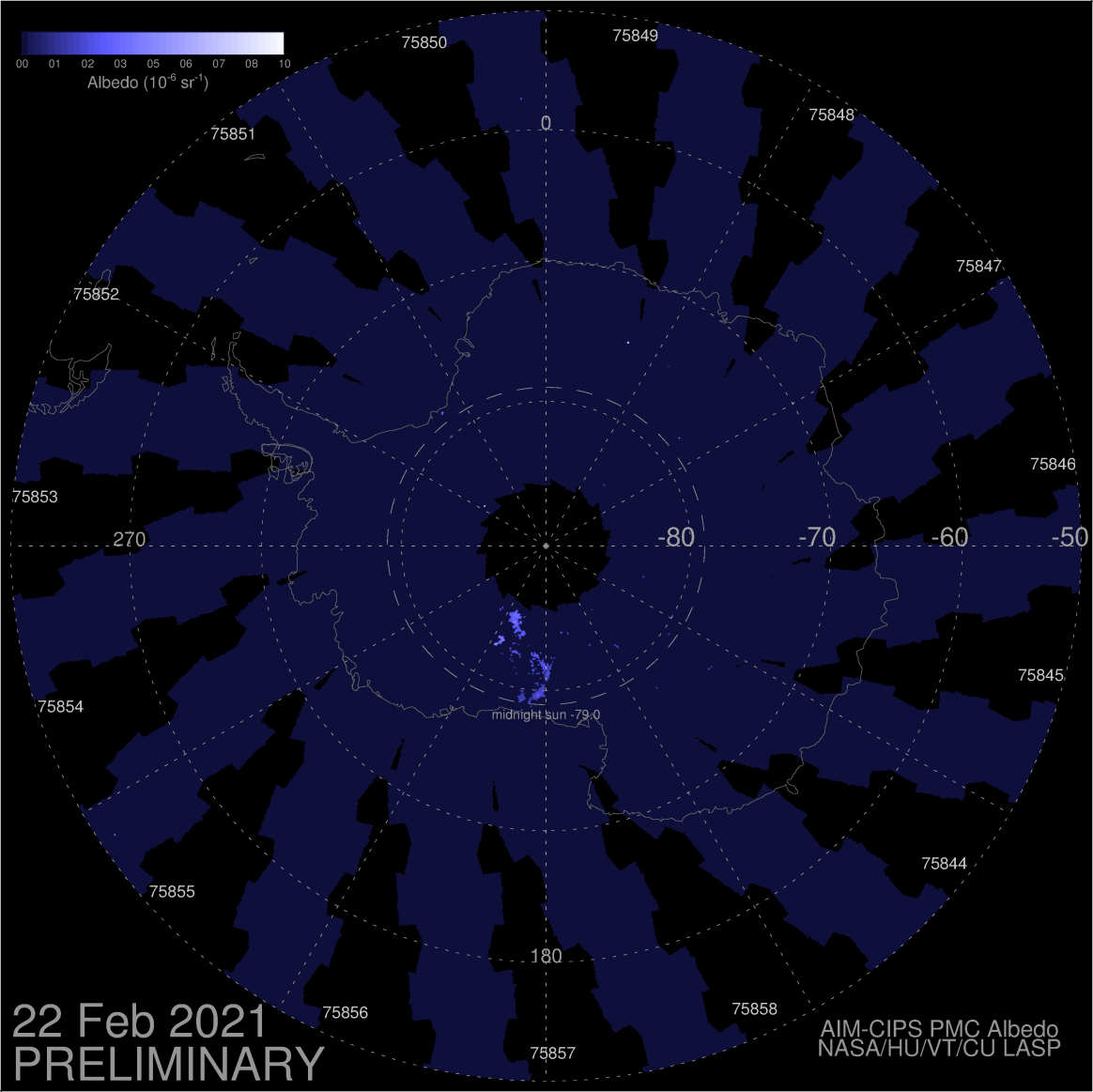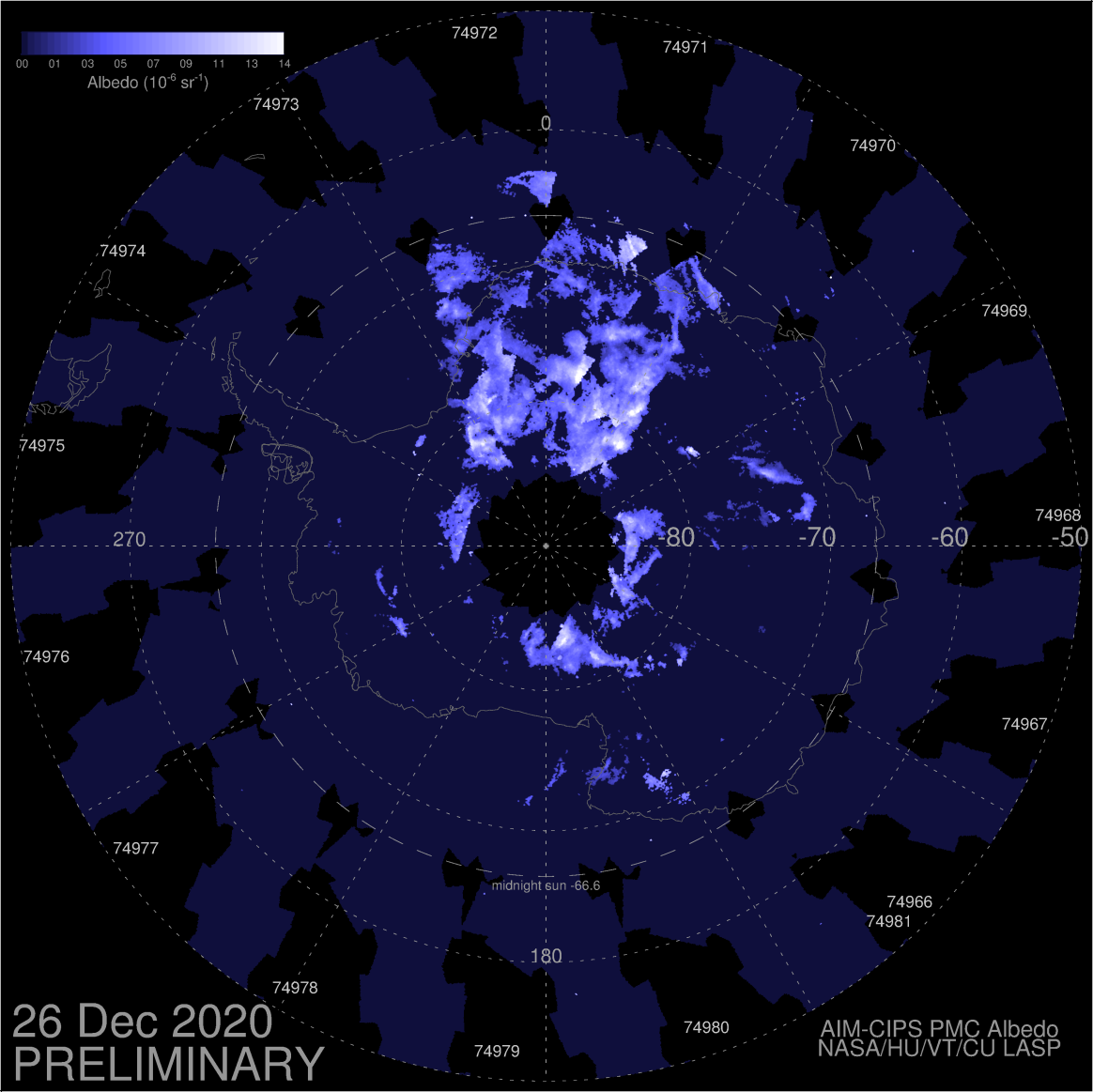Forum Replies Created
-
AuthorPosts
-
 John MurrellParticipant
John MurrellParticipantI saw NLC on the evening of the 23rd June from South London UK but the display was rather obscured by lower normal clouds covering up part of the sky. The sky seemed quite bright though the Sun was around 8 degrees below the Horizon.
No repeat of the 2019 event where NLC were seen at the Zenith even though this is impossible according to the normal illumination model.
 John MurrellParticipant
John MurrellParticipantOne quick note, my website and others show diagrams that say the maximum height NLC can be seen as they need to be illuminated by the Sun is around 45 degrees. However in 2019 NLC were seen by lots of observers including me at the observers Zenith. The theory says this cannot happen but is based on the assumption that light travels through the atmosphere in straight lines. In reality it is bent by refraction as the air density increases but the amount of refraction is poorly understood particularly at high altitudes so it could be that in 2019 the atmospheric conditions were such that the light bent enough to light clouds overhead.
More observations of the highest angle and the observers location and time are always useful.
 John MurrellParticipant
John MurrellParticipantThe strange thing about this display was that it was visible at the Zenith from near London as well as other places – this should not be possible according to the accepted geometry. I have not seen any explanation on how & why this happened
 John MurrellParticipant
John MurrellParticipantHello Keelin,
I think if one crunched the numbers some of the molecules of water vapour you have breathed out in your ( and my) life are in fact in those clouds already.
It’s due to just how small a molecule is and therefore the number you breath out over your lifetime. Even though there are even more in the water in all the world once mixed the possibility of their being one molecule in a volume of a cubic meter is quite high. The same applies to the oxygen in air.
 John MurrellParticipant
John MurrellParticipantIt appears that the southern Summer Noctilucent Cloud season has ended. The last trace of NLC appears on the AIM image from the 22nd February 2021 see below:

Lets hope for a good NLC season in the North this year, it should begin in late May or June. Keep an eye on speceweather.com for updated images from AIM.
December 31, 2020 at 11:53 am in reply to: Noctilucent Cloud in the Antarctic 2020 – missing #462729 John MurrellParticipant
John MurrellParticipantFor those who may not have looked at the AIM ‘Daily Daisy’ images before they are a bit different to normal satellite images. The image is a composite of observations during several satellite passes these produce the ‘petal’ pattern seen in the dark blue in the images. The black area have no observations including the area over the South pole. The faint grey is the outline of the continent as well as the tip of South America at about 280 degrees.
The dashed circle shows the limit of the midnight sun so it is daylight South of this and the NLC while visible from space by the AIM satellite will not be visible from the ground. The lack of populated landmass north of this line is probably the reason there are so few observations of NLC from the southern hemisphere. NLC is worth a lot of points in my cloud collecting book – southern NLC should be worth at least 10 times as much.
 John MurrellParticipant
John MurrellParticipantI have been imaging the Northern NLC for several years – from what I have seen in recent years they seem to have moved from being post Sunset to being a morning pre-sunrise phenomena.
In terms of the climate change link it is normally considered that that climate change is increasing the numbers of NLC rather than reducing them. For some weird reason of atmospheric physics / chemistry the Mesosphere gets colder in the summer while the lower parts of the atmosphere gets warmer. NLC require three things to form – very cold temperatures, water vapour that should not be in the mesosphere and dust nuclei to condense on which also should not be in the mesosphere. One theory is that the dust particles come from space – from burning meteors. The big mystery is why they were first recorded in 1885 two years after the explosion of Krakatoa. This probably pushed dust into the Mesosphere but there have been previous large volcanic eruptions that would have done the same. Meteors as a source of dust particles have been burning up for ever so that is not a reason.
The remaining reasons are: they were there but no one noticed / recorded them. This seems unlikely with places like the Royal Observatory having observers looking north from Greenwich every clear night. Also a remarkable number of other atmospheric phenomena were recorded. The other possible reason is that the mesosphere got colder or wetter in the 1880’s but why ?
 John MurrellParticipant
John MurrellParticipantAn update spaceweather.com has the missing NLC featured on their daily webpage see https://spaceweather.com/archive.php?view=1&day=29&month=12&year=2020 . The images shown were from the 24th December . There is an update to the latest image from 26th December at

Where activity seems to have increased a lot over a couple of days. So now it is back to cloud appreciation !
It is interesting to note that the formation of NLC requires gravity (buoyancy) waves to carry water high enough for NLC to form in the normally dry troposphere. There is a link to a page on Gravity Waves at https://www.weather.gov/source/zhu/ZHU_Training_Page/Miscellaneous/gravity_wave/gravity_wave.html – note some images are missing. In some of the Northern Hemisphere NLC movies I have seen the gravity waves are visible as stationary features with the NLC pouring over them like a waterfall.
-
AuthorPosts




